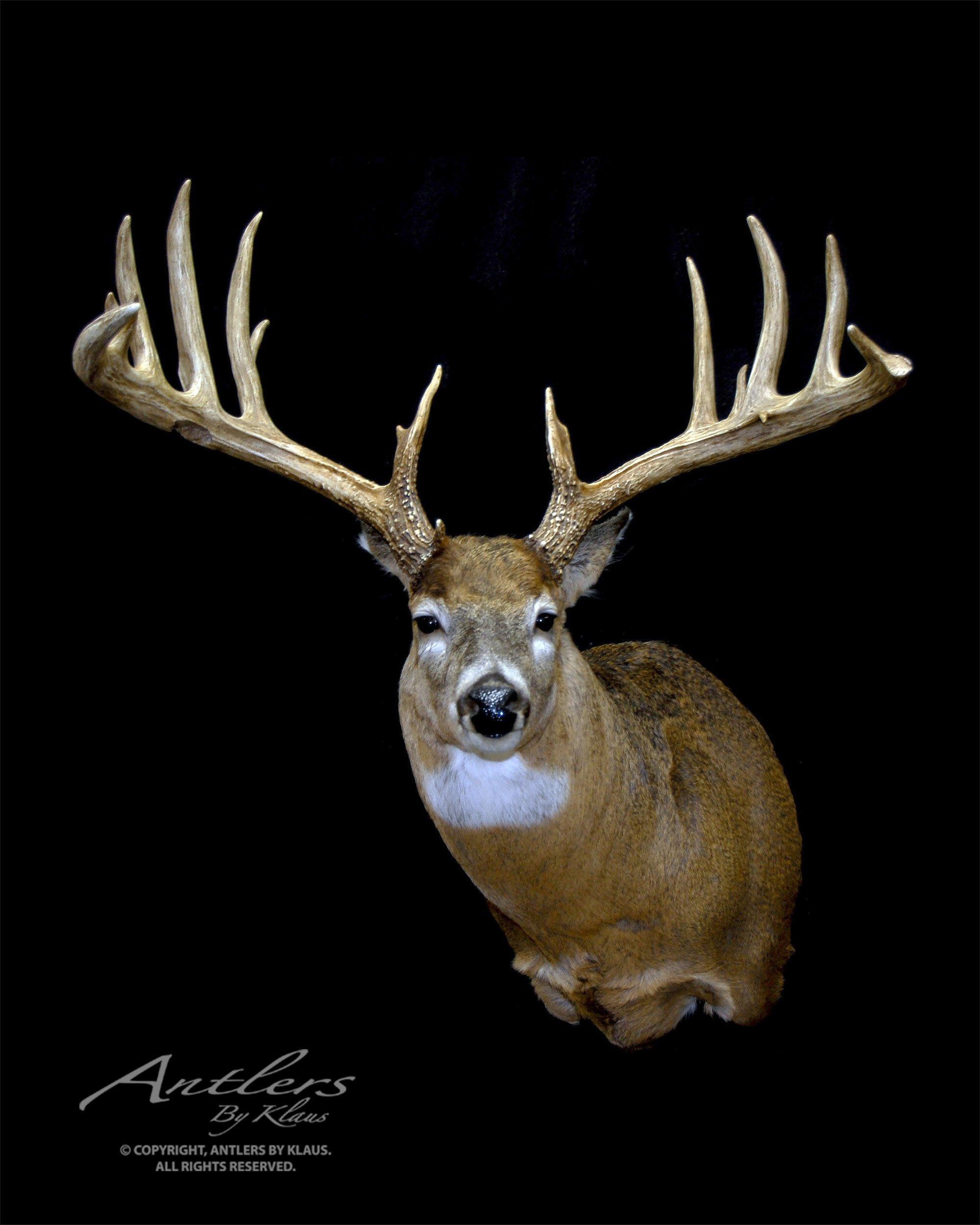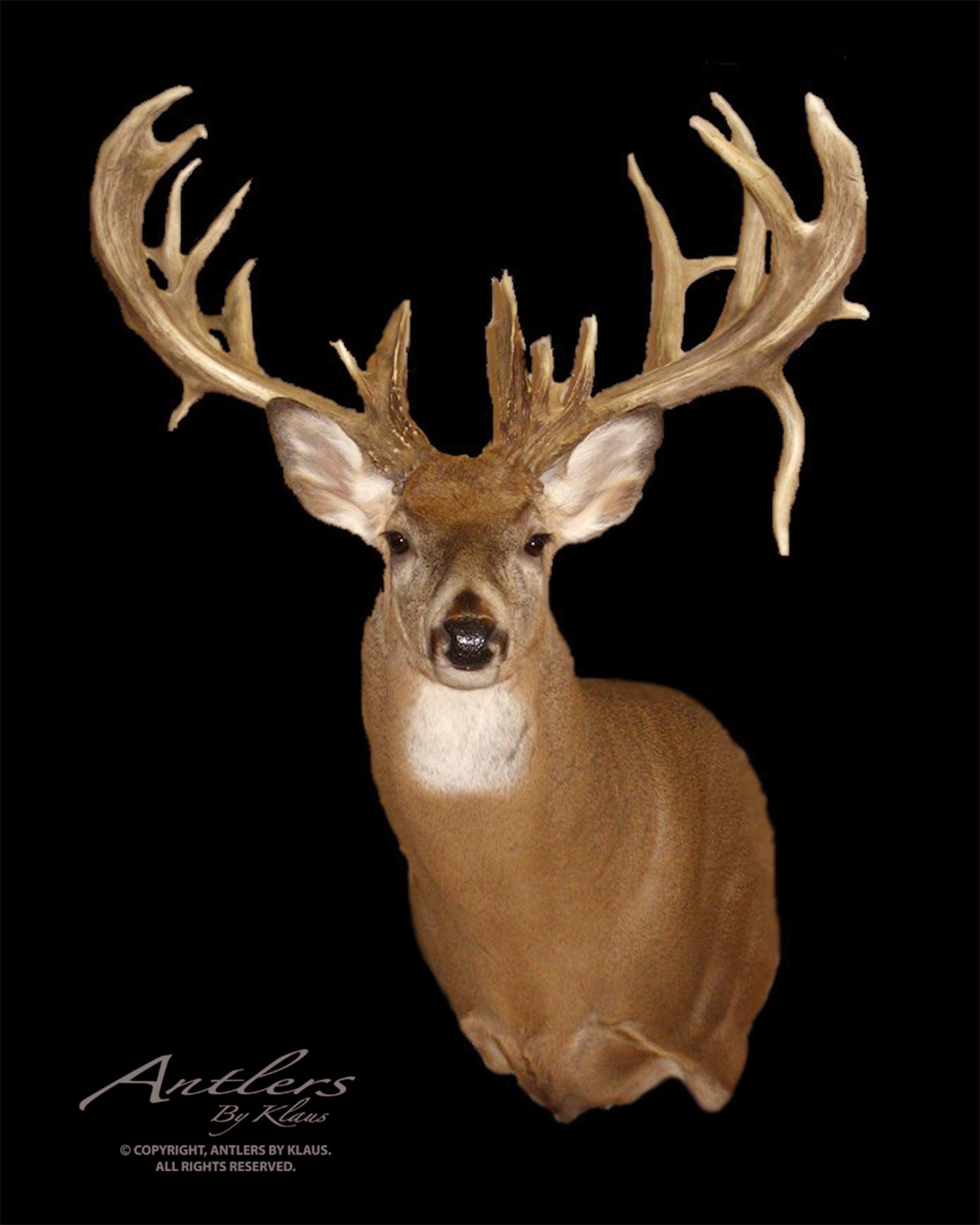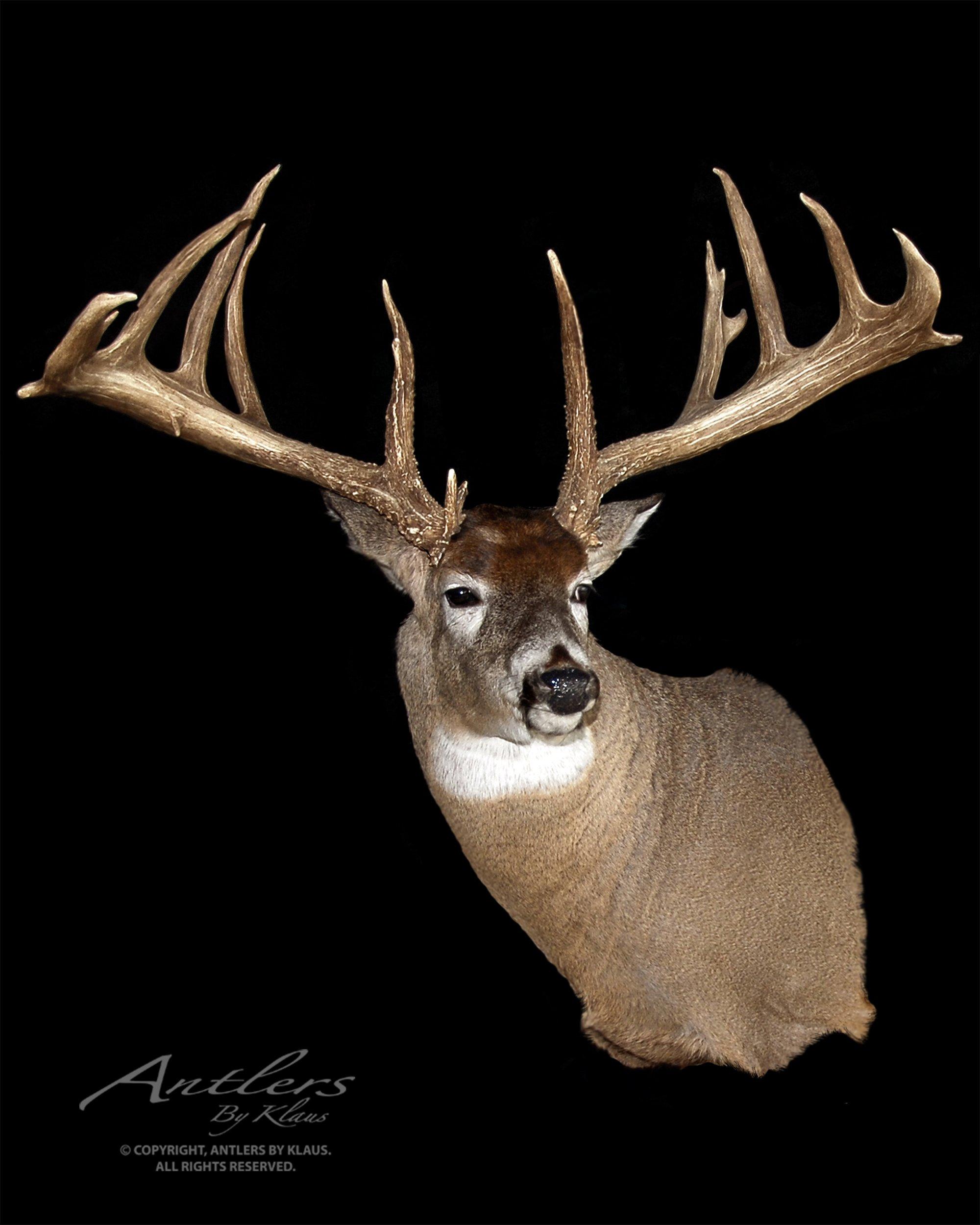Very few whitetails top this mark, but some have. Here are stories of a few of these amazing animals
A monster buck with a football goalpost atop its head steps into view. Its crown sways as it walks. The big rascal carries itself with the sort of swagger only a 30-inch-spread can produce.
The allure of a big, wide rack captivates hunters. A whitetail with a wide spread looks more impressive on trail camera than deer with most other major antler traits. But the widest antler spreads — bucks with 30-plus-inch spreads — are rare.
These special bucks all had ultra-wide antlers, and cool stories to go along with them. Plus, we’ve included some fun facts about antler spreads.

The John Filla buck is 4/8 inch shy of hitting the magical 30-inch mark. Image courtesy of Antlers by Klaus
The John Filla Buck
On paper, the John Filla Buck doesn’t have a 30-inch spread. Instead, its inside spread is 29-4/8 inches. That said, it broke off the end of its left main beam. With the addition of that lost piece, it’d surely be a 30-incher. (Its right main beam is an impressive 30-2/8 inches.)
The buck was harvested near Independence, Wisconsin, in 2006. On the first day of gun season, Filla and several relatives jumped the monster on a deer drive. They managed to hit it with several shots, but the deer didn’t die until after jumping off a 20-foot embankment. It scores 214-2/8 inches.

The Derek Paul buck is all spread and points. It’s as impressive as wide bucks come. Image courtesy of Antlers by Klaus
The Derek Paul Buck
Another mega-spread deer, the Derek Paul Buck came from Iowa. It sports a tip-to-tip spread of more than 30 inches. Both main beams measure 28-3/8 inches and point straight outward, making that spread possible. Also, unrelated to spreads but cool, the buck boasts more than 36 inches of nontypical points and scores 230-2/8 inches.

The Clint Barnes Buck is wide, but the mass at the end of its main beams might be even more impressive. Image by Antlers by Klaus
The Clint Barnes Buck
A spectacle, the Clint Barnes Buck was harvested in Nebraska. Taken during the 2005 deer season, its inside spread is 31-5/8 inches. It also sports unreal mass measurements and superb beam lengths. It scores a whopping 221-2/8 inches.

The buck known as “Big Red” is named after its rich-colored forehead patch. Image courtesy of Antlers by Klaus
The C.W. Shelton “Big Red” Buck
C.W. Shelton’s “Big Red” gets its name from the red-colored forehead patch. In 1964, this 16-point buck was bagged during one of Kentucky’s first deer seasons in decades. The deer has an incredible 34-4/8-inch inside spread. Big Red scores 185-¼ inches.

The Ronald Martin buck is certainly wide but also carries a lot of cool, short points. Image courtesy of Antlers by Klaus
The Ronald Martin Buck
One of the widest whitetails of all time, the Ronald Martin Buck’s spread is 37 inches. It was harvested in New Brunswick during the 1946 season. Upon seeing the deer, Martin thought it was a woodland caribou. Then he realized it was a whitetail. This 34-point buck sports massive mass measurements, 79-5/8 inches of abnormal points, and an overall score of 249-7/8 inches.
Don’t Miss: CRAZY PLACES WHITETAILS LIVE
Whitetail Antler Spread Fun Facts
Despite the aforementioned bucks, whitetails with 30-plus-inch-wide antler spreads are uncommon. A 30-plus-inch spread is the approximate equivalent of total mass measurement surpassing 55 plus inches. Both are astounding and incredibly impressive.
Fact 1: Everyone loves a wide antler spread. Often, it makes a deer look bigger than it is. But although a wide inside spread can also indicate longer main beams, it’s usually less important than mass to an overall score. For example, a 30-inch spread instead of a 23-inch spread only adds 7 inches to the overall score (plus potentially longer main beams). In contrast, a deer with 50 inches of mass scores far better than one with 35 to 40 inches of mass.
Fact 2: As massive as Milo Hanson’s 213-5/8-inch world-record typical whitetail appears, it’s only 27 inches wide. Not even the world-record nontypical whitetail, which scores 333-7/8 inches, hits the magical mark. It has a 33-plus-inch outside spread, but it’s inside spread (which is the spread credit used in the score) does not surpass the 30-inch mark.
Fact 3: Culling for specific antler genetics, such as wide antler spreads, doesn’t work in wild deer herds. Numerous research efforts have concluded that too many factors that cannot be influenced, paired with factors that outpace what little culling can achieve, make it impossible.
Fact 4: Just because a big, old, wide buck lived on your hunting land doesn’t mean its fawns will inherit Pop’s wide load. According to Cole Anderson, a former graduate research assistant with the Caesar Kleberg Wildlife Research Institute at Texas A&M University-Kingsville, antler spread is the least heritable trait passed from bucks to their offspring. In fact, although tine length is 49% heritable, antler spread is only 5% heritable. Comparatively, overall gross antler scores are 30 to 40% heritable.
Fact 5: Without question, 30-inch-wide bucks are rare. I’ve had more than 1,500 Indiana, Kentucky, Ohio, and South Carolina bucks on trail cameras. Of those, I’ve never captured a picture of a buck with a 30-inch spread. The widest likely neared 24 to 25 inches, but only a few hit that mark. Based on my anecdotal experience, and studying record book data, the commonality of a 30-inch spread is likely less than 0.001%.
Although the exact percentage is unknown, few bucks reach the legendary 30-inch threshold, and those that do form an exclusive club.
Don’t Miss: SUPER 6-POINT BUCKS YOU MUST SEE TO BELIEVE

















































